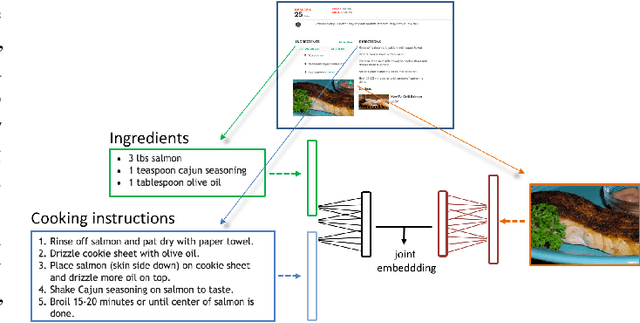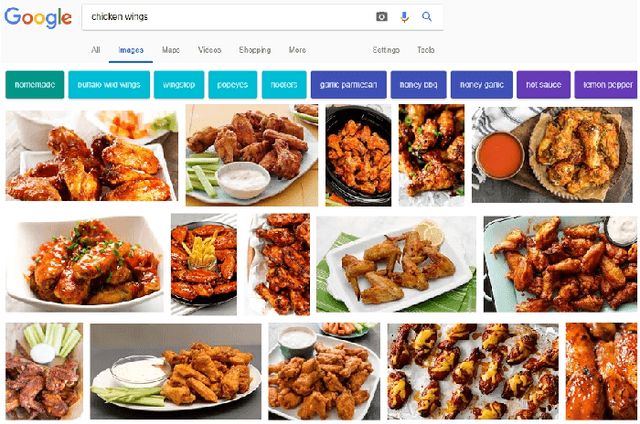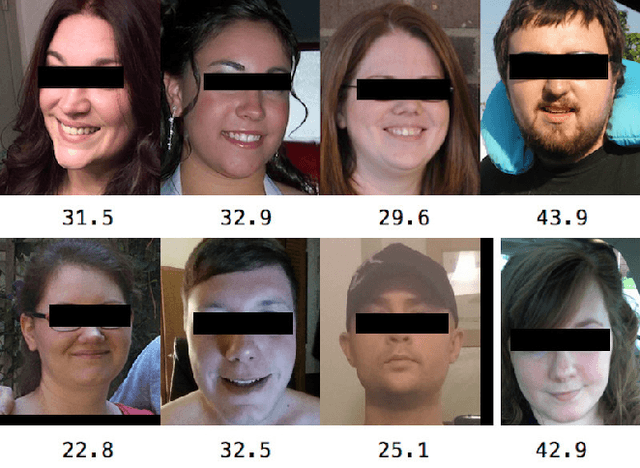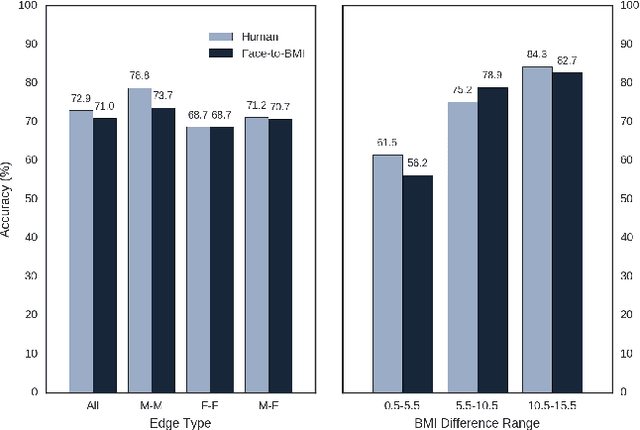Javier Marin
EarthView: A Large Scale Remote Sensing Dataset for Self-Supervision
Jan 14, 2025Abstract:This paper presents EarthView, a comprehensive dataset specifically designed for self-supervision on remote sensing data, intended to enhance deep learning applications on Earth monitoring tasks. The dataset spans 15 tera pixels of global remote-sensing data, combining imagery from a diverse range of sources, including NEON, Sentinel, and a novel release of 1m spatial resolution data from Satellogic. Our dataset provides a wide spectrum of image data with varying resolutions, harnessed from different sensors and organized coherently into an accessible HuggingFace dataset in parquet format. This data spans five years, from 2017 to 2022. Accompanying the dataset, we introduce EarthMAE, a tailored Masked Autoencoder, developed to tackle the distinct challenges of remote sensing data. Trained in a self-supervised fashion, EarthMAE effectively processes different data modalities such as hyperspectral, multispectral, topographical data, segmentation maps, and temporal structure. This model helps us show that pre-training on Satellogic data improves performance on downstream tasks. While there is still a gap to fill in MAE for heterogeneous data, we regard this innovative combination of an expansive, diverse dataset and a versatile model adapted for self-supervised learning as a stride forward in deep learning for Earth monitoring.
A non-ergodic framework for understanding emergent capabilities in Large Language Models
Jan 03, 2025Abstract:Large language models have emergent capabilities that come unexpectedly at scale, but we need a theoretical framework to explain why and how they emerge. We prove that language models are actually non-ergodic systems while providing a mathematical framework based on Stuart Kauffman's theory of the adjacent possible (TAP) to explain capability emergence. Our resource-constrained TAP equation demonstrates how architectural, training, and contextual constraints interact to shape model capabilities through phase transitions in semantic space. We prove through experiments with three different language models that capacities emerge through discrete transitions guided by constraint interactions and path-dependent exploration. This framework provides a theoretical basis for understanding emergence in language models and guides the development of architectures that can guide capability emergence.
Optimizing AI Reasoning: A Hamiltonian Dynamics Approach to Multi-Hop Question Answering
Oct 06, 2024



Abstract:This paper introduces an innovative approach to analyzing and improving multi-hop reasoning in AI systems by drawing inspiration from Hamiltonian mechanics. We propose a novel framework that maps reasoning chains in embedding spaces to Hamiltonian systems, allowing us to leverage powerful analytical tools from classical physics. Our method defines a Hamiltonian function that balances the progression of reasoning (kinetic energy) against the relevance to the question at hand (potential energy). Using this framework, we analyze a large dataset of reasoning chains from a multi-hop question-answering task, revealing intriguing patterns that distinguish valid from invalid reasoning. We show that valid reasoning chains have lower Hamiltonian energy and move in ways that make the best trade-off between getting more information and answering the right question. Furthermore, we demonstrate the application of this framework to steer the creation of more efficient reasoning algorithms within AI systems. Our results not only provide new insights into the nature of valid reasoning but also open up exciting possibilities for physics-inspired approaches to understanding and improving artificial intelligence.
Social Dynamics of Consumer Response: A Unified Framework Integrating Statistical Physics and Marketing Dynamics
Apr 01, 2024Abstract:Comprehending how consumers react to advertising inputs is essential for marketers aiming to optimize advertising strategies and improve campaign effectiveness. This study examines the complex nature of consumer behaviour by applying theoretical frameworks derived from physics and social psychology. We present an innovative equation that captures the relation between spending on advertising and consumer response, using concepts such as symmetries, scaling laws, and phase transitions. By validating our equation against well-known models such as the Michaelis-Menten and Hill equations, we prove its effectiveness in accurately representing the complexity of consumer response dynamics. The analysis emphasizes the importance of key model parameters, such as marketing effectiveness, response sensitivity, and behavioural sensitivity, in influencing consumer behaviour. The work explores the practical implications for advertisers and marketers, as well as discussing the limitations and future research directions. In summary, this study provides a thorough framework for comprehending and forecasting consumer reactions to advertising, which has implications for optimizing advertising strategies and allocating resources.
Bayesian Methods for Media Mix Modelling with shape and funnel effects
Nov 21, 2023Abstract:In recent years, significant progress in generative AI has highlighted the important role of physics-inspired models that utilize advanced mathematical concepts based on fundamental physics principles to enhance artificial intelligence capabilities. Among these models, those based on diffusion equations have greatly improved image quality. This study aims to explore the potential uses of Maxwell-Boltzmann equation, which forms the basis of the kinetic theory of gases, and the Michaelis-Menten model in Marketing Mix Modelling (MMM) applications. We propose incorporating these equations into Hierarchical Bayesian models to analyse consumer behaviour in the context of advertising. These equation sets excel in accurately describing the random dynamics in complex systems like social interactions and consumer-advertising interactions.
Object Detection performance variation on compressed satellite image datasets with iquaflow
Jan 18, 2023Abstract:A lot of work has been done to reach the best possible performance of predictive models on images. There are fewer studies about the resilience of these models when they are trained on image datasets that suffer modifications altering their original quality. Yet this is a common problem that is often encountered in the industry. A good example of that is with earth observation satellites that are capturing many images. The energy and time of connection to the earth of an orbiting satellite are limited and must be carefully used. An approach to mitigate that is to compress the images on board before downloading. The compression can be regulated depending on the intended usage of the image and the requirements of this application. We present a new software tool with the name iquaflow that is designed to study image quality and model performance variation given an alteration of the image dataset. Furthermore, we do a showcase study about oriented object detection models adoption on a public image dataset DOTA Xia_2018_CVPR given different compression levels. The optimal compression point is found and the usefulness of iquaflow becomes evident.
An experimental study on Synthetic Tabular Data Evaluation
Dec 15, 2022Abstract:In this paper, we present the findings of various methodologies for measuring the similarity of synthetic data generated from tabular data samples. We particularly apply our research to the case where the synthetic data has many more samples than the real data. This task has a special complexity: validating the reliability of this synthetically generated data with a much higher number of samples than the original. We evaluated the most commonly used global metrics found in the literature. We introduced a novel approach based on the data's topological signature analysis. Topological data analysis has several advantages in addressing this latter challenge. The study of qualitative geometric information focuses on geometric properties while neglecting quantitative distance function values. This is especially useful with high-dimensional synthetic data where the sample size has been significantly increased. It is comparable to introducing new data points into the data space within the limits set by the original data. Then, in large synthetic data spaces, points will be much more concentrated than in the original space, and their analysis will become much more sensitive to both the metrics used and noise. Instead, the concept of "closeness" between points is used for qualitative geometric information. Finally, we suggest an approach based on data Eigen vectors for evaluating the level of noise in synthetic data. This approach can also be used to assess the similarity of original and synthetic data.
Recipe1M: A Dataset for Learning Cross-Modal Embeddings for Cooking Recipes and Food Images
Oct 14, 2018



Abstract:In this paper, we introduce Recipe1M, a new large-scale, structured corpus of over one million cooking recipes and 13 million food images. As the largest publicly available collection of recipe data, Recipe1M affords the ability to train high-capacity models on aligned, multi-modal data. Using these data, we train a neural network to learn a joint embedding of recipes and images that yields impressive results on an image-recipe retrieval task. Moreover, we demonstrate that regularization via the addition of a high-level classification objective both improves retrieval performance to rival that of humans and enables semantic vector arithmetic. We postulate that these embeddings will provide a basis for further exploration of the Recipe1M dataset and food and cooking in general. Code, data and models are publicly available.
Face-to-BMI: Using Computer Vision to Infer Body Mass Index on Social Media
Mar 09, 2017


Abstract:A person's weight status can have profound implications on their life, ranging from mental health, to longevity, to financial income. At the societal level, "fat shaming" and other forms of "sizeism" are a growing concern, while increasing obesity rates are linked to ever raising healthcare costs. For these reasons, researchers from a variety of backgrounds are interested in studying obesity from all angles. To obtain data, traditionally, a person would have to accurately self-report their body-mass index (BMI) or would have to see a doctor to have it measured. In this paper, we show how computer vision can be used to infer a person's BMI from social media images. We hope that our tool, which we release, helps to advance the study of social aspects related to body weight.
 Add to Chrome
Add to Chrome Add to Firefox
Add to Firefox Add to Edge
Add to Edge